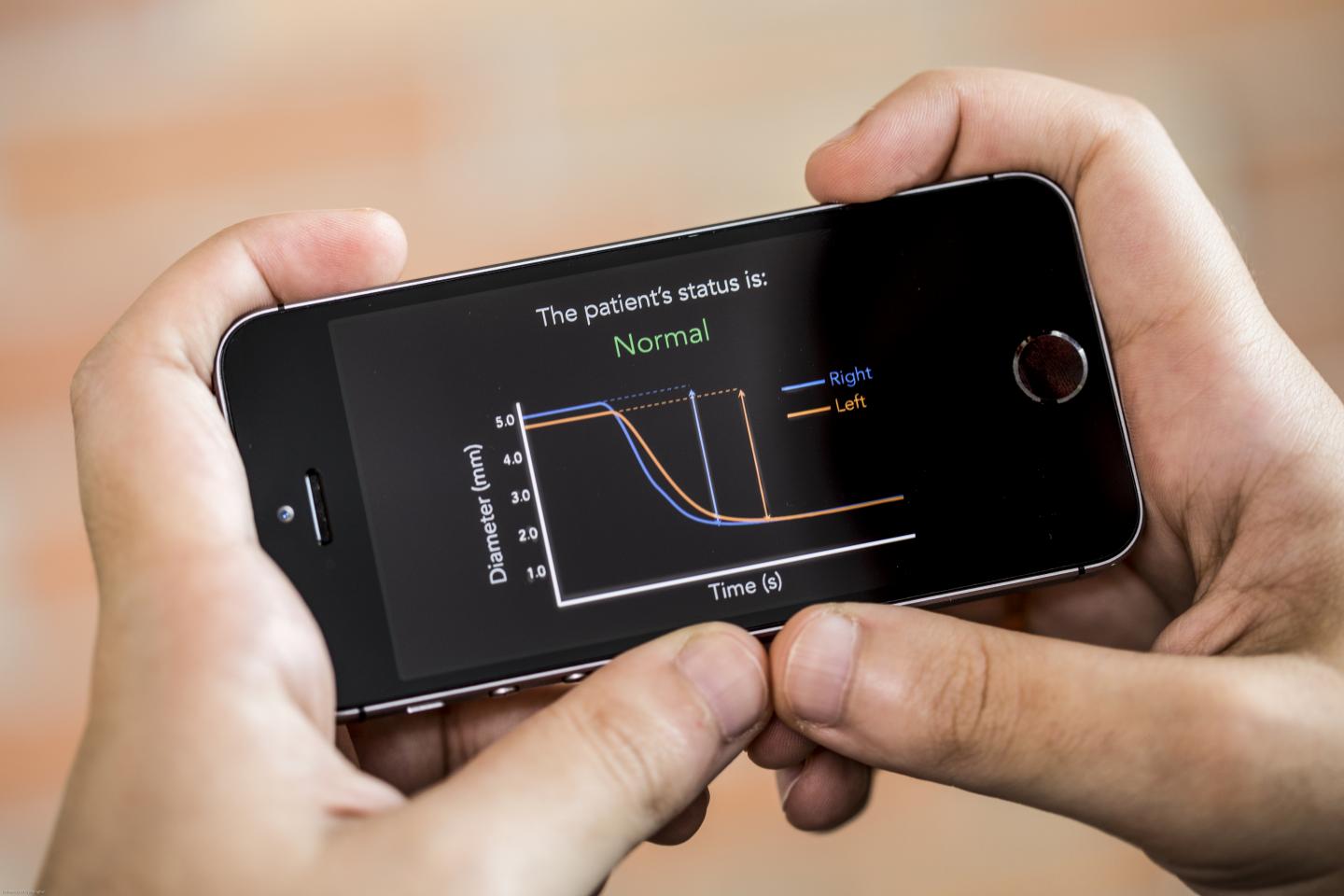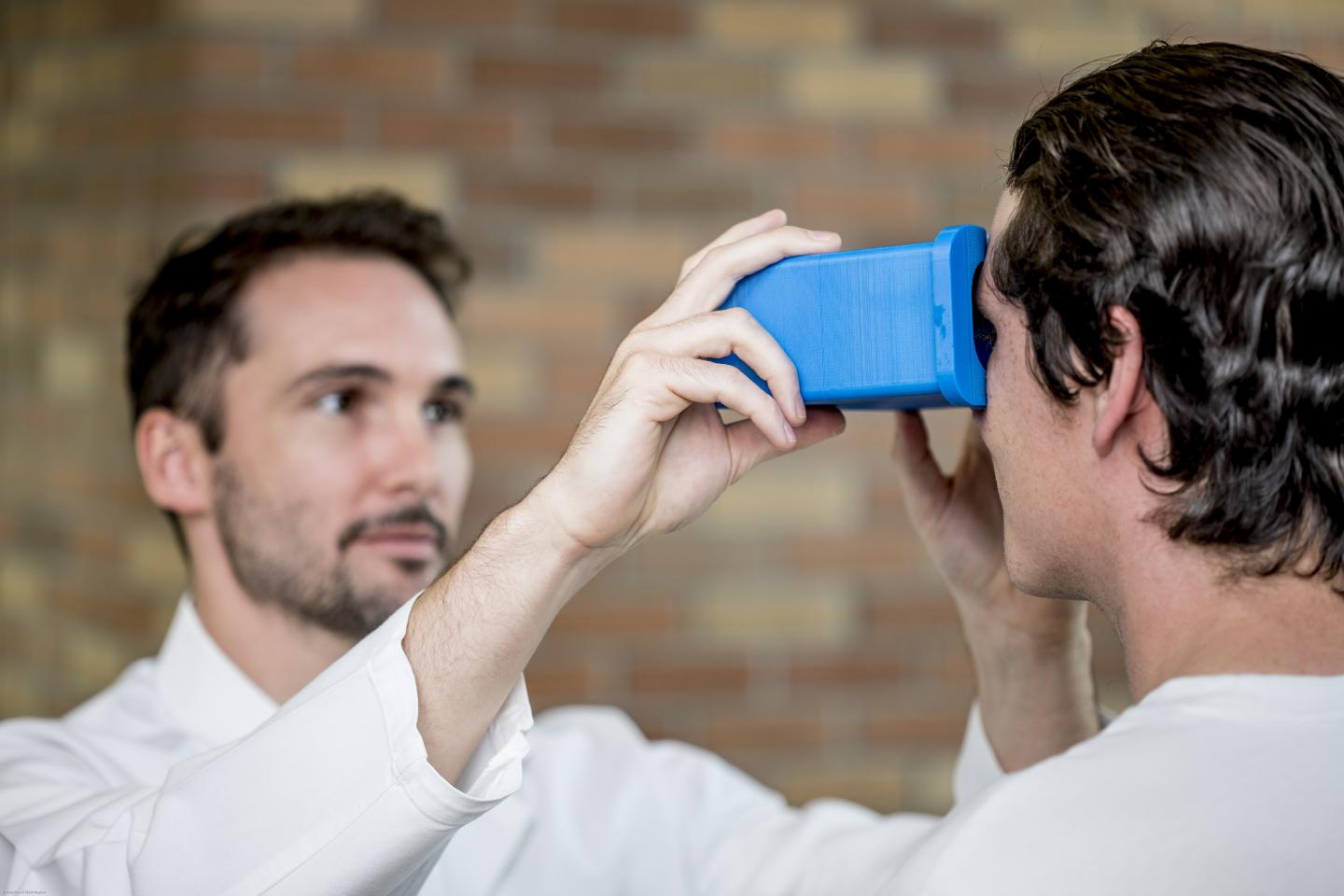
Smartphone App Objectively Assesses Brain Injuries in The Field
A smartphone app that detects concussion and other traumatic brain injuries (TBIs) could be used to determine whether someone — whether a football player, a soldier in battle, or an elderly person who has fallen — should be further assessed for concussion or other brain injury. The app, called PupilScreen, uses a smartphone’s video camera and deep learning tools to identify changes in the pupil’s response to light.
PupilScreen stimulates the patient’s eyes using the smartphone’s flash and, using the camera, records an eight-second video of the eyes as the pupils constrict in response to the flash. The recorded video is processed using neural networks that track the pupil diameter over time, determining which pixels belong to the pupil in each video frame, and measuring the changes in pupil size across the frames. The resulting metrics (e.g., constriction velocity, magnitude of diameter change) can be used by clinicians for diagnosis.

PupilScreen combines a smartphone's flash and video camera with machine learning tools to track how the eye's pupil reacts to light. The app can currently distinguish between the pupillary light reflex of healthy people and patients with severe traumatic brain injury. Additional studies this fall will help determine what characteristics are most useful in detecting milder concussions. Courtesy of Dennis Wise/University of Washington.
To standardize results, the smartphone is placed in a 3D-printed box, similar to a head-mounted virtual reality display, which is then used to control the eyes’ exposure to light by eliminating ambient lighting conditions and controlling the distance between the person’s face and the flash.
According to researchers, one of the challenges in developing PupilScreen was training the machine learning tools to distinguish between the eye’s pupil and iris. This involved annotating roughly 4000 images of eyes by hand. Researchers note that a computer has the advantage of being able to quantify subtle changes in the pupillary light reflex that the human eye cannot perceive.

The UW researchers initially tested PupilScreen with a 3D-printed box that controls the eye's exposure to light. They are now training their deep learning algorithms to produce similar results with the smartphone camera alone. Courtesy of Dennis Wise/University of Washington.
The team of University of Washington researchers conducted a small pilot study with six patients who had suffered a traumatic brain injury, and found that clinicians were able to correctly differentiate between patients and healthy individuals with almost perfect accuracy using PupilScreen’s output alone. A broader clinical study planned for this fall will put PupilScreen in the hands of coaches, EMTs, doctors and others to gather more data about which pupillary response characteristics are most helpful in determining ambiguous cases of concussion. The researchers hope to release a commercially available version of PupilScreen within two years.
In amateur sports today, even the best practices that coaches or parents use to detect concussion essentially consist of subjective assessment. PupilScreen aims to generate objective and clinically relevant data that could be used in the field to determine whether a person should be further assessed for brain injury.
“Having an objective measure that a coach or parent or anyone on the sidelines of a game could use to screen for concussion would truly be a game-changer,” said professor Shwetak Patel. “Right now the best screening protocols we have are still subjective, and a player who really wants to get back on the field can find ways to game the system.”
Historically, there has been no surefire way to diagnose concussion, even in the emergency room.
“PupilScreen aims to fill that gap by giving us the first capability to measure an objective biomarker of concussion in the field,” Dr. Lynn McGrath said. “After further testing, we think this device will empower everyone from Little League coaches to NFL doctors to emergency department physicians to rapidly detect and triage head injury.”
Although the team initially tested PupilScreen with a 3D-printed box to control the eye's exposure to light, researchers are now training their neural network to produce similar results with the smartphone camera alone.
“The vision we’re shooting for is having someone simply hold the phone up and use the flash. We want every parent, coach, caregiver or EMT who is concerned about a brain injury to be able to use it on the spot without needing extra hardware,” said researcher Alex Mariakakis.
The researchers are currently working to identify partners interested in conducting additional field studies of the app, which they expect to begin in October.
The research will be presented at UBICOMP 2017 , to be held September 11-15, 2017, at the Grand Wailea Hotel Resort & Spa in Maui, Hawaii.
University of Washington researchers are developing a smartphone app called PupilScreen that aims to objectively detect concussion and other traumatic brain injuries in the field, which could provide a new level of screening for athletes and accident victims. Courtesy of University of Washington.
Published: September 2017